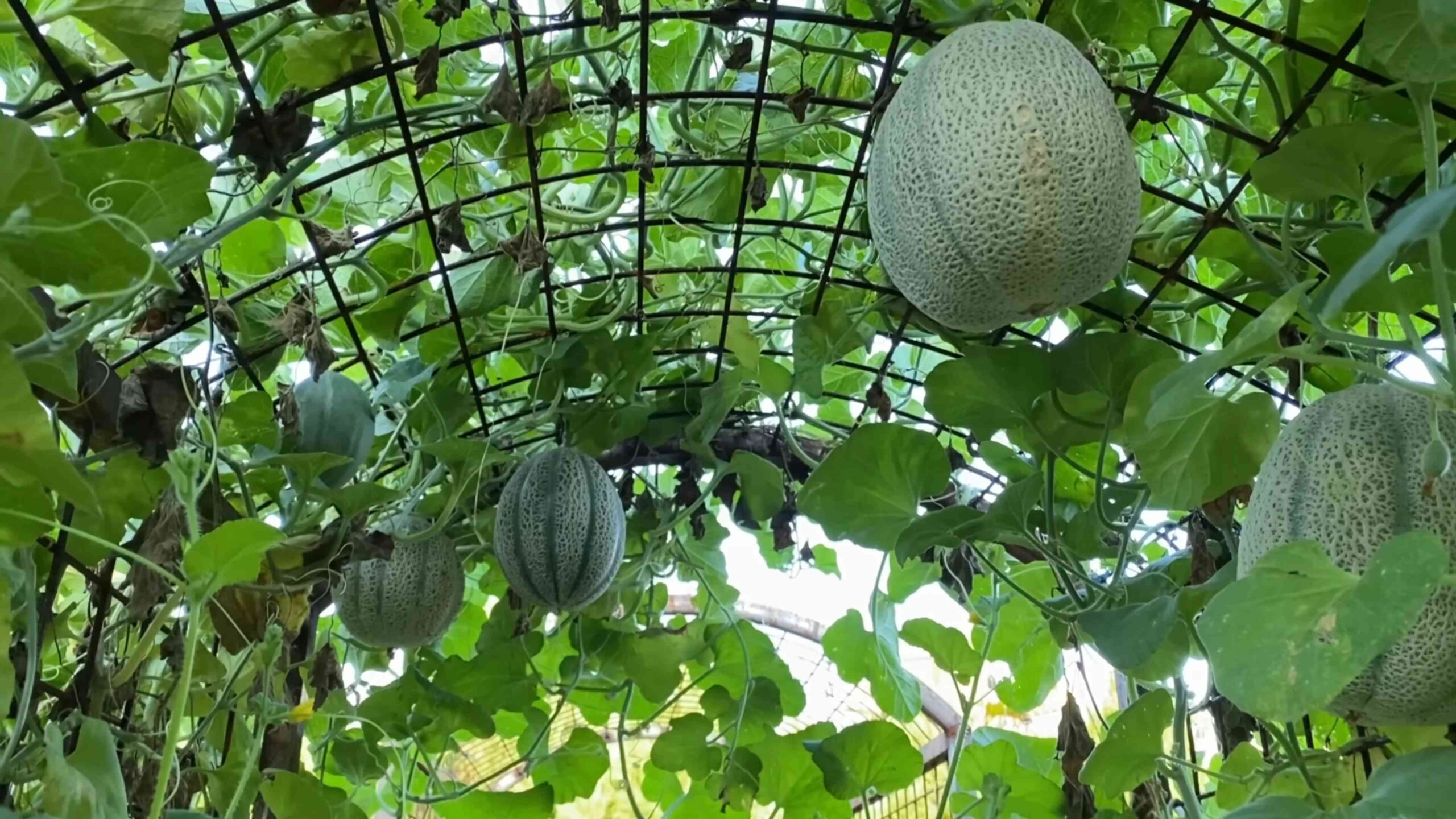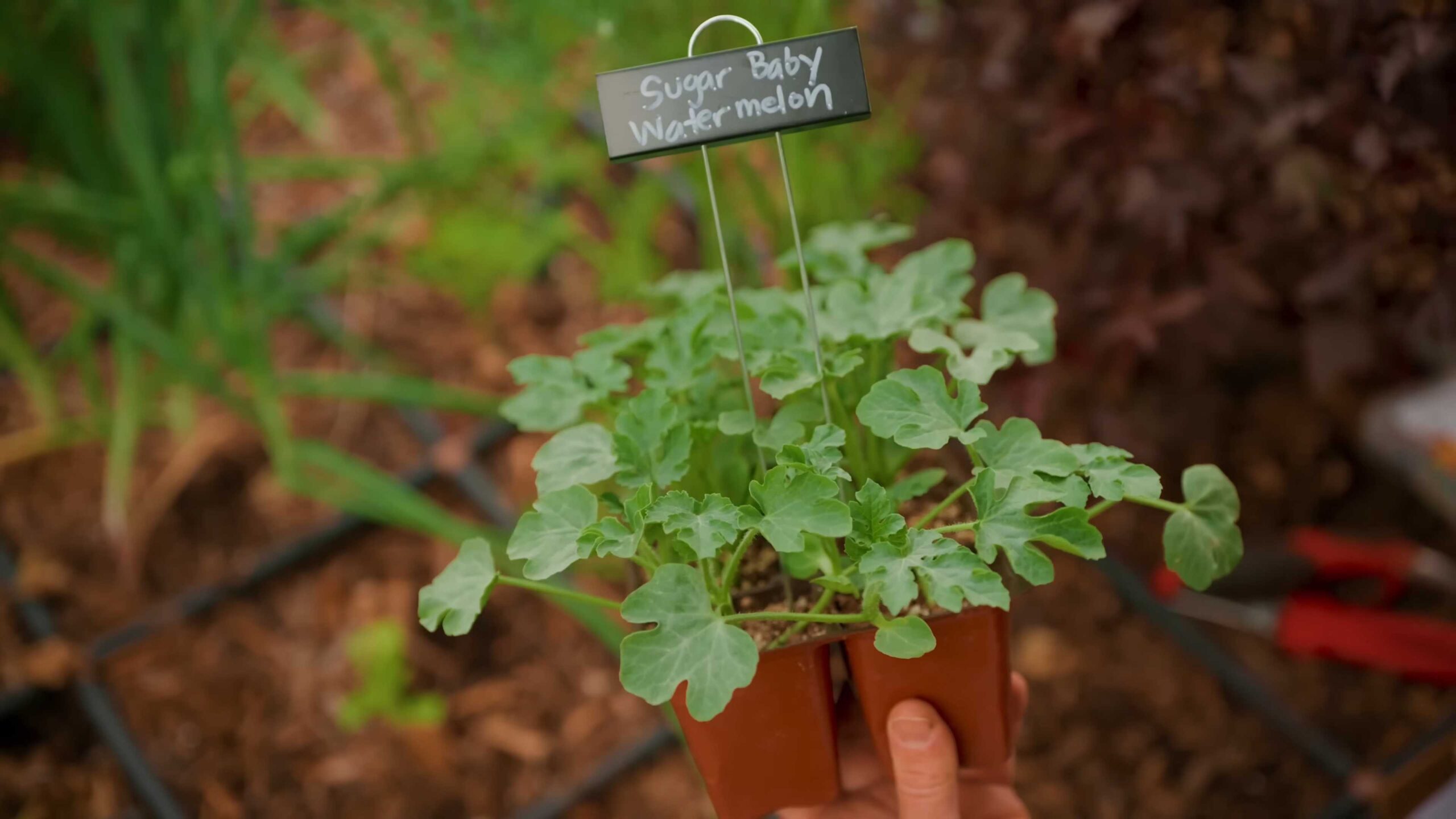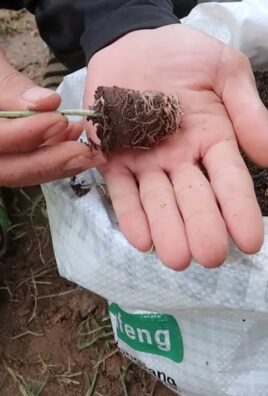Summer crops to grow at home? Absolutely! Imagine stepping into your backyard and harvesting sun-ripened tomatoes, crisp cucumbers, and fragrant herbs, all grown with your own two hands. It’s not just a dream; it’s an achievable reality with a few simple tricks and DIY hacks. For centuries, humans have cultivated their own food, from ancient Egyptians tending to their vegetable gardens along the Nile to the “Victory Gardens” of World War II, a testament to self-sufficiency and resilience.
But why should you bother growing your own summer crops? In today’s world, where grocery store produce can be expensive and often lacks the vibrant flavor of homegrown goods, cultivating your own garden offers a delicious and cost-effective alternative. Plus, there’s an undeniable satisfaction in nurturing a plant from seed to table. This article is packed with easy-to-follow DIY projects and clever gardening hacks that will empower you to create a thriving summer garden, even if you have limited space or experience. I’m here to guide you through the process, sharing my favorite tips and tricks for successfully growing summer crops to grow at home, ensuring you enjoy a bountiful harvest all season long.

Grow Your Own Summer Bounty: A Beginner’s Guide to Homegrown Summer Crops
Hey there, fellow gardening enthusiasts! I’m so excited to share my tips and tricks for growing your own delicious summer crops right at home. There’s nothing quite like the taste of a sun-ripened tomato or a crisp cucumber you’ve nurtured yourself. This guide is perfect for beginners, so don’t worry if you’ve never planted a seed before. We’ll walk through everything step-by-step.
Choosing Your Crops: Summer Garden Stars
Before we get our hands dirty, let’s decide what we want to grow! Summer crops thrive in warm weather and plenty of sunshine. Here are some of my favorites, perfect for beginner gardeners:
* Tomatoes: A classic for a reason! Choose from various sizes and types, from cherry tomatoes to beefsteaks.
* Cucumbers: Refreshing and easy to grow, especially vining varieties that can climb a trellis.
* Zucchini: Prolific producers! Be prepared for an abundance of zucchini – perfect for grilling, baking, and sharing with neighbors.
* Peppers: From sweet bell peppers to spicy jalapeños, peppers add flavor and color to your garden.
* Beans: Bush beans are compact and easy to grow, while pole beans need a trellis to climb.
* Lettuce and Salad Greens: Enjoy fresh salads all summer long by planting a variety of greens.
* Herbs: Basil, mint, oregano, and thyme are easy to grow and add flavor to your summer dishes.
Preparing Your Garden Space: Setting the Stage for Success
The key to a thriving garden is proper preparation. Here’s how to get your garden space ready for planting:
* Sunlight: Most summer crops need at least 6-8 hours of direct sunlight per day. Choose a location that gets plenty of sun.
* Soil: Well-draining soil is essential. If your soil is heavy clay or sandy, amend it with compost or other organic matter.
* Water: Access to water is crucial. Consider a nearby water source or a soaker hose system.
* Space: Consider the mature size of your plants when planning your garden layout. Give them enough room to grow without overcrowding.
Starting Seeds Indoors (Optional): Getting a Head Start
Starting seeds indoors gives you a head start on the growing season, especially in areas with shorter summers. I usually start my tomatoes and peppers indoors about 6-8 weeks before the last expected frost.
Materials You’ll Need:
* Seed starting trays or small pots
* Seed starting mix
* Seeds
* Watering can or spray bottle
* Grow lights (optional, but highly recommended)
* Heat mat (optional, but helpful for germination)
Step-by-Step Instructions:
1. Fill the trays or pots with seed starting mix. Gently tap the containers to settle the mix.
2. Sow the seeds according to the package instructions. Generally, you’ll plant seeds about ¼ inch deep.
3. Water gently. Use a spray bottle or watering can with a gentle nozzle to avoid disturbing the seeds.
4. Cover the trays or pots with a clear plastic dome or plastic wrap. This helps retain moisture.
5. Place the trays or pots in a warm location. A heat mat can help speed up germination.
6. Once the seeds germinate, remove the plastic cover and place the trays or pots under grow lights. If you don’t have grow lights, place them in a sunny window.
7. Water regularly, keeping the soil moist but not soggy.
8. Once the seedlings have a few sets of true leaves, transplant them into larger pots.
Planting Your Crops: From Seedling to Garden Star
Once the danger of frost has passed, it’s time to transplant your seedlings (or direct sow seeds) into the garden.
Materials You’ll Need:
* Your seedlings or seeds
* Gardening gloves
* Trowel or shovel
* Watering can or hose
* Fertilizer (optional)
* Mulch (optional)
Step-by-Step Instructions:
1. Harden off your seedlings. Gradually acclimate them to outdoor conditions by exposing them to increasing amounts of sunlight and wind over a week or two.
2. Prepare the planting holes. Dig holes that are slightly larger than the root balls of your seedlings.
3. Carefully remove the seedlings from their pots. Gently loosen the roots if they are tightly bound.
4. Place the seedlings in the holes and backfill with soil. Gently pat the soil around the base of the plants.
5. Water thoroughly.
6. Apply fertilizer (optional). Use a balanced fertilizer according to the package instructions.
7. Mulch around the plants (optional). Mulch helps retain moisture, suppress weeds, and regulate soil temperature.
Caring for Your Garden: Nurturing Your Plants
Once your plants are in the ground, it’s important to provide them with the care they need to thrive.
* Watering: Water deeply and regularly, especially during hot, dry weather. Aim to water at the base of the plants to avoid wetting the foliage, which can lead to disease.
* Weeding: Regularly remove weeds to prevent them from competing with your plants for nutrients and water.
* Fertilizing: Fertilize your plants every few weeks with a balanced fertilizer.
* Pest and Disease Control: Monitor your plants regularly for signs of pests or diseases. Take action promptly to prevent problems from spreading. I prefer using organic pest control methods whenever possible.
* Support: Provide support for vining plants like tomatoes, cucumbers, and beans. Use stakes, trellises, or cages to keep them off the ground.
Harvesting Your Crops: The Fruits (and Vegetables!) of Your Labor
Harvesting is the most rewarding part of gardening! Here are some tips for harvesting your summer crops:
* Tomatoes: Harvest tomatoes when they are fully colored and slightly soft to the touch.
* Cucumbers: Harvest cucumbers when they are the desired size and shape.
* Zucchini: Harvest zucchini when they are small to medium-sized. Larger zucchini can become tough and seedy.
* Peppers: Harvest peppers when they are fully colored and firm.
* Beans: Harvest beans when the pods are plump and the beans inside are well-developed.
* Lettuce and Salad Greens: Harvest lettuce and salad greens when the leaves are young and tender.
* Herbs: Harvest herbs as needed throughout the growing season.
Troubleshooting Common Problems: Overcoming Challenges
Even the most experienced gardeners encounter problems from time to time. Here are some common issues and how to address them:
* Pests: Aphids, slugs, and tomato hornworms are common garden pests. Use insecticidal soap, diatomaceous earth, or hand-picking to control them.
* Diseases: Powdery mildew, blight, and blossom end rot are common plant diseases. Improve air circulation, water at the base of the plants, and use disease-resistant varieties.
* Poor Soil: Amend your soil with compost or other organic matter to improve drainage and fertility.
* Lack of Sunlight: Choose a location that gets at least 6-8 hours of direct sunlight per day.
* Overwatering or Underwatering: Water deeply and regularly, but avoid overwatering. Check the soil moisture before watering.
Specific Crop Tips: Getting the Most Out of Your Garden
Let’s dive into some specific tips for growing some of my favorite summer crops:
Tomatoes: The King of the Summer Garden
* Choose the right variety: Determinate tomatoes are bush-type plants that produce all their fruit at once, while indeterminate tomatoes are vining plants that produce fruit throughout the season.
* Provide support: Use stakes, cages, or trellises to support tomato plants.
* Prune suckers: Remove suckers (the small shoots that grow between the main stem and the branches) to improve air circulation and encourage fruit production.
* Water deeply: Water deeply and regularly, especially during hot, dry weather.
* Fertilize regularly: Fertilize tomato plants every few weeks with a balanced fertilizer.
Cucumbers: Cool and Crisp
* Choose the right variety: Vining cucumbers need a trellis to climb, while bush cucumbers are more compact.
* Provide support: Use a trellis to support vining cucumbers.
* Water regularly: Cucumbers need consistent moisture to produce well.
* Harvest regularly: Harvest cucumbers when they are the desired size and shape.
Zucchini: The Gift That Keeps on Giving
* Plant in well

Conclusion
So, there you have it! Growing your own summer crops at home isn’t just a fun hobby; it’s a gateway to fresher, healthier, and more flavorful meals. Imagine biting into a sun-ripened tomato you nurtured from a tiny seed, or adding a handful of fragrant basil, freshly picked from your own garden, to your pasta sauce. The difference in taste and quality is simply undeniable.
This guide has hopefully demystified the process, showing you that even with limited space or experience, you can cultivate a thriving summer garden. We’ve covered some of the easiest and most rewarding crops to start with, from the ever-popular tomatoes and cucumbers to the versatile zucchini and the aromatic herbs that elevate any dish.
But the beauty of gardening lies in its adaptability. Feel free to experiment with different varieties of each crop. Try growing heirloom tomatoes for their unique flavors and colors, or explore different types of basil, like Thai basil or lemon basil, to add a twist to your culinary creations. Consider companion planting to maximize your space and improve the health of your plants. For example, planting basil near your tomatoes can help deter pests and improve their flavor. Marigolds are also excellent companion plants for many summer vegetables, acting as a natural pest repellent.
Don’t be afraid to get your hands dirty and learn from your mistakes. Gardening is a journey, and every season brings new challenges and opportunities. The key is to start small, be patient, and enjoy the process. Remember to choose a sunny spot, provide adequate water and nutrients, and protect your plants from pests and diseases.
And speaking of pests, consider using organic pest control methods whenever possible. Neem oil is a great natural insecticide that can be used to control a wide range of pests, while introducing beneficial insects like ladybugs can help keep aphids in check.
Ultimately, the goal is to create a sustainable and enjoyable gardening experience that provides you with fresh, delicious produce throughout the summer months. This guide provides a solid foundation, but the real learning happens when you put these tips into practice and adapt them to your specific environment and preferences.
We strongly encourage you to give growing your own summer crops a try. It’s a rewarding experience that connects you with nature, improves your health, and enhances your culinary skills. And most importantly, don’t forget to share your experiences with us! We’d love to hear about your successes, your challenges, and any tips or tricks you’ve discovered along the way. Share your photos and stories on social media using [Your Hashtag Here] and let’s inspire others to embrace the joy of homegrown goodness. Let’s cultivate a community of passionate gardeners, one summer crop at a time!
Variations and Further Exploration
Consider exploring vertical gardening techniques if you have limited space. Trellises for cucumbers and tomatoes can save space and improve air circulation. Also, look into succession planting, where you plant new crops every few weeks to ensure a continuous harvest throughout the summer.
Frequently Asked Questions (FAQ)
What are the easiest summer crops to grow for beginners?
Tomatoes, zucchini, cucumbers, peppers, and herbs like basil and mint are generally considered easy to grow for beginners. They are relatively low-maintenance and can thrive in a variety of conditions. Cherry tomatoes are particularly forgiving and produce abundant yields. Zucchini is known for its rapid growth and prolific production, making it a rewarding choice for novice gardeners. Basil is also very easy to grow, especially in pots, and can be harvested regularly to encourage bushier growth.
How much sunlight do summer crops need?
Most summer crops require at least 6-8 hours of direct sunlight per day to thrive. Sunlight is essential for photosynthesis, the process by which plants convert light energy into chemical energy for growth. If you don’t have a spot that receives full sun, you can still grow some crops, but they may not produce as abundantly. Leafy greens like lettuce and spinach can tolerate partial shade, as can some herbs like parsley and cilantro. However, for fruiting vegetables like tomatoes, peppers, and cucumbers, full sun is crucial for optimal fruit production.
What kind of soil is best for growing summer crops?
Well-draining soil that is rich in organic matter is ideal for growing summer crops. Amend your soil with compost or aged manure to improve its fertility and drainage. Avoid heavy clay soils, which can become waterlogged and suffocate plant roots. If you have clay soil, you can improve its drainage by adding sand and organic matter. A soil pH of around 6.0 to 7.0 is generally suitable for most summer vegetables. You can test your soil pH using a soil testing kit and amend it accordingly.
How often should I water my summer crops?
Water your summer crops deeply and regularly, especially during hot, dry weather. The frequency of watering will depend on the type of soil, the weather conditions, and the specific needs of the plant. As a general rule, aim to keep the soil consistently moist but not waterlogged. Check the soil moisture by sticking your finger into the soil about an inch deep. If the soil feels dry, it’s time to water. Water in the morning to allow the foliage to dry before nightfall, which can help prevent fungal diseases.
How can I protect my summer crops from pests and diseases?
There are several ways to protect your summer crops from pests and diseases. Start by choosing disease-resistant varieties whenever possible. Practice good garden hygiene by removing any dead or diseased leaves and debris. Use organic pest control methods like neem oil, insecticidal soap, or introducing beneficial insects. Companion planting can also help deter pests. For example, planting marigolds near your tomatoes can help repel nematodes and other pests. Regularly inspect your plants for signs of pests or diseases and take action promptly.
What are some common mistakes to avoid when growing summer crops?
Some common mistakes to avoid include overwatering, underwatering, planting too closely together, neglecting to fertilize, and ignoring pest and disease problems. Overwatering can lead to root rot, while underwatering can stress plants and reduce yields. Planting too closely together can restrict air circulation and increase the risk of disease. Neglecting to fertilize can result in nutrient deficiencies, which can stunt growth and reduce fruit production. Ignoring pest and disease problems can allow them to spread quickly and damage your crops.
Can I grow summer crops in containers?
Yes, many summer crops can be successfully grown in containers, especially if you have limited space. Choose containers that are large enough to accommodate the mature size of the plant. Use a high-quality potting mix and ensure that the containers have drainage holes. Water and fertilize container-grown plants more frequently than those grown in the ground, as they tend to dry out more quickly. Some good choices for container gardening include tomatoes, peppers, herbs, and bush beans.
How do I know when my summer crops are ready to harvest?
The timing of harvest will depend on the specific crop. Tomatoes are ready to harvest when they are fully colored and slightly soft to the touch. Cucumbers are best harvested when they are still young and tender. Zucchini should be harvested when they are about 6-8 inches long. Peppers are ready to harvest when they have reached their mature color and size. Herbs can be harvested as needed, but regular harvesting will encourage bushier growth.
What are some good companion plants for summer crops?
Companion planting can help improve the health and productivity of your summer crops. Basil is a great companion plant for tomatoes, as it can help deter pests and improve their flavor. Marigolds are also excellent companion plants for many summer vegetables, acting as a natural pest repellent. Carrots and onions can help deter pests from each other. Beans can fix nitrogen in the soil, which can benefit other plants.
How can I extend the growing season for my summer crops?
There are several ways to extend the growing season for your summer crops. Start seeds indoors several weeks before the last expected frost. Use row covers or cold frames to protect plants from frost and cold temperatures. Choose early-maturing varieties of crops. Use mulch to help retain soil moisture and regulate soil temperature. Consider using a greenhouse or high tunnel to provide a warmer growing environment.





Leave a Comment